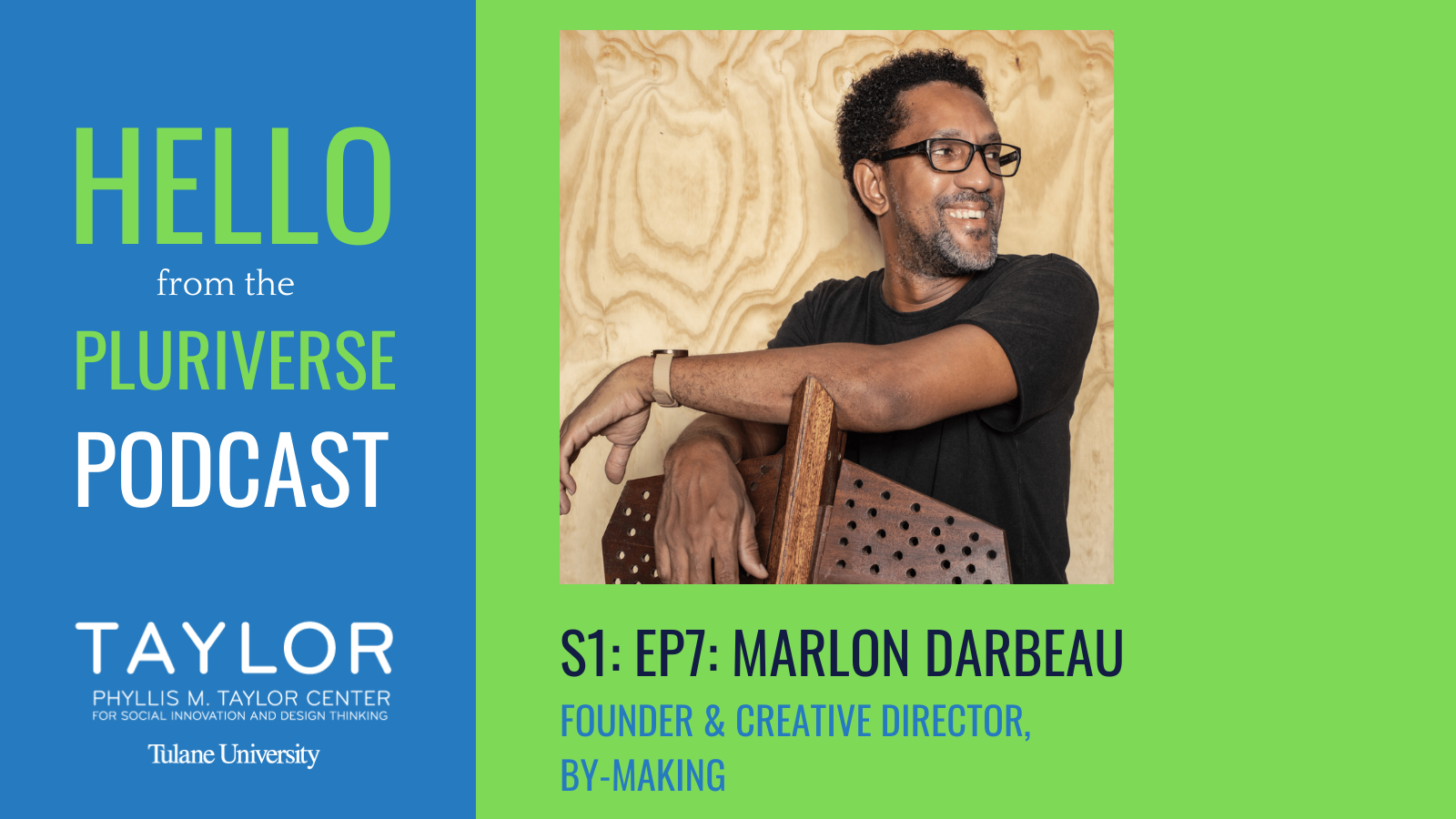Marlon Darbeau is a designer, the Founder and Creative Director of By-Making, and a collaborator at the Alice Yard art-space initiative.
Based in Trinidad and Tobago, Marlon’s identity is rooted in his culture and his upbringing. He consistently integrates techniques his father taught him into his own physical designs, not only incorporating his identity and his family into his work, but also working towards striving to bring his local Caribbean culture into the present and future.
Connect with Marlon Darbeau:
- Website
- Instagram @marlondarbeau
- Instagram: @bymakingdesign
- By Making
Pluriverse Publication Chapter: Marlon Darbeau
written by Melissa Rosenthal and edited by Natalie Hudanick
Download a PDF layout of the Marlon Darbeau chapter in the Pluriverse Publication.
Marlon Darbeau, the Founder and Creative Director of By-Making and a collaborator at the Alice Yard art-space initiative, is a designer currently based in Trinidad, where he was trained as a professional graphic designer, but has now transitioned into the creation of more physical objects. He integrates his culture and upbringing into the work he now creates. Growing up, Marlon’s father taught him techniques to be used with metal and timber; materials that have since played a large role in the objects he creates. He works to express and reinterpret local culture in the Caribbean by striving to bring the culture into the present and the future. He is focused on using our visual culture to display our integrated culture.
Marlon works with varying types of traditional workshops in Trinidad to make and distribute items. These items can be anything from a candle stick holder to a bench. He intentionally uses timber and metal in the majority of his work to merge his family tradition with the projects he creates. As of recently he has been working with larger manufacturers that utilize more modern technologies.
When speaking about how place and identity influence the designer it was clear Marlon felt if he had not been brought up in a certain place and raised in a certain way he would not be doing what he is today. Place and identify have a major impact on the work he creates, and he holds this idea at the center of his work. Integrating older techniques with the creation of new objects is Marlon’s way of bringing his past and identity into the future. He is looking towards the future while taking his own individual identity and integrating it into his work.
When asked about design thinking, he did not feel that he was defined blankly as a “design thinker” but that he implements the process often without recognizing it. Inherently, designers should be thinking and have lots of consideration when designing. His main aim when designing is understanding what you are wanting to do, and why you are doing it. This is necessary when designing and one must look at all spheres of a project to answer these questions. Designers cannot design in a vacuum, they must have outside input and influence to truly understand what it is they are trying to accomplish.
Although he did not label himself as a design thinker, his informal application of the practices was clear. His advice for non-designers using design thinking methods was to focus primarily on meaning before anything else. Regardless of what the intent of a project is, the important thing to understand is the why. It is important and necessary to allow yourself to travel along on a journey of discovery about the particular project you are working on and the context of the project. Designers and non-designers need to conduct research in different forms, as a part of this journey. Understanding materials and how they will change or impact their designs is one type of relevant research. To Marlon, “the why” was just as important than the physical outcome of the project. If you can identify all of the key elements to realize your intent, that is a way to ensure that you are thinking as a designer.
In the long-term Marlon wonders how the objects he has created will impact overtime. He is curious as to whether they will be seen as a relevant symbol of the time or not. Marlon does not focus on making the pieces timeless when creating them, but he still enjoys hypothesizing and thinking deeply about what their role will be 40 years in the future. Though he may not focus on making his designs timeless, Marlon first starts his design process by the “projecting the future” to figure out what he is wanting and trying to achieve. Once that is decided, he focuses on how that can come together in his design. This type of process that Marlon uses can really inspire us to think about how our creation not only fits in the present, but also how it will fit in the future, even if the design itself is not timeless.
- Instagram: @hellopluriverse
- Twitter: @hellopluriverse
- Email: taylor@tulane.edu
- Subscribe to our newsletter
The Hello from the Pluriverse Podcast aims to open up and create a space to have conservations about the pluriversality in design.
This podcast is a project of the Design Thinking for Social Innovation Program at the Phyllis M. Taylor Center for Social Innovation and Design Thinking at Tulane University.
Executive Producer: Lesley-Ann Noel, Ph.D
Sound editing
- Max Esperance
- Lavonte Lucas: xn--vonni-fsa.com, Instagram: @vonnieradass, Twitter: @vonnieradass
Hello from the Pluriverse 2020-2021 Student Team
- Max Esperance – Podcast lead
- Natalie Hudanick and Michaeline Anglemire – Editors
- Tiwani Oseni – Communications
Hello from the Pluriverse 2019-2020 Student Team

